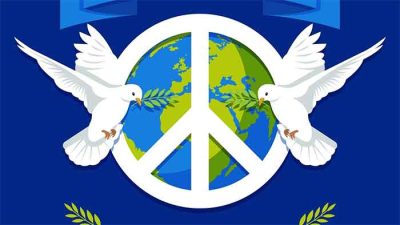Unconditional Ceasefire Should be the Starting Point for Ending Most Ongoing Conflicts

At present there are about 56 conflicts in the world, more than in any year since WW2. In addition there is a tendency for conflicts to be more prolonged. The percentage of conflicts ending with peace agreements has declined from 23% in the 1970s to just 4% in the 2010s. The possibility of ongoing conflicts escalating into much bigger and destructive wars is very high just now. The humanitarian crisis arising from conflicts is endangering the life of many times more people than die directly in the violence of conflicts, while the budgets available for humanitarian aid are diminishing.
All these are important reasons for a significantly enhanced sense of urgency in finding peaceful solutions for conflicts and in particular for such ideas that can bring at least some immediate relief, apart from laying the foundation for more durable peace. With modern heavily destructive weapons in use, it is an immense relief if the shooting, bombing and fighting can stop as early as possible even if various contentious issues take longer to resolve. Thousands of deaths, very painful injuries and disabilities can be stopped on daily basis if such steps can be taken up on a significant scale.
Hence the way forward for peace efforts in the case of most conflicts should be to combine three important steps that are mutually supportive of each other.
The first part in turn consists of two sub-parts. First, the two sides agree to unconditional ceasefire i.e. cessations of all fighting in whatever form, more or less on the basis of the existing line of control. The second sub-part consists of the two sides agreeing at the same time to engage in peaceful negotiations to settle all contentious issues.
Such an agreement has the advantage of stopping the fighting, bombing and shooting immediately and providing immediate relief to long-suffering people. Food and other relief supplies can now be rushed much more easily and safely to people who need these the most. Medical care and medicines for seriously injured and ill people can now be provided more easily. Large-scale reconstruction and repair work can also start now and many displaced people can gradually start returning to their homes. In addition there is no loss of face for either side as all contentious issues are kept open for future peace negotiations.
The second part of the peace process parts starts a few month later after preparations have been made for peace negotiations. This should not be seen as a hurried affair. Both sides should agree that regardless of any persisting differences, the peace negotiations should not break down. There can be one round, followed with a short rest (I won’t call it a break), then the second round can start, and then after a gap the third round can start. If in the process big differences get resolved that is very good, but even if this does not happen and only some minor ones are resolved, this too is a step forward. What is important is that the peace negotiations should not be allowed to break down and should be conducted as politely as possible, taking special care to avoid any provocative statements. Attempts should be made to create near consensus on both sides that peace negotiations should not break down and should continue.
The third part of the peace process is that while peace negotiations are taking place with some rest periods, outside of the main peace negotiations a number of other efforts should be made with even greater continuity to create goodwill between the people of the two countries, remove misunderstandings, promote cultural exchanges, have co-production of movies, promote economic ties and trade in such ways that are genuinely beneficial for the people of both countries and strong economic reasons are also created for a relationship of friendship between the two countries.
All the three processes are intended to be mutually supportive towards each other.
While the above suggestions have been in the context mainly of conflicts involving two countries but of course these apply also to conflicts involving more than two countries or to two or more sides of internal conflicts.
These suggestions are for a path which can create durable peace and goodwill.
*
Click the share button below to email/forward this article to your friends and colleagues. Follow us on Instagram and Twitter and subscribe to our Telegram Channel. Feel free to repost and share widely Global Research articles.
Spread the Truth, Refer a Friend to Global Research
Bharat Dogra is Honorary Convener, Campaign to Save Earth Now. His recent books include Protecting Earth for Children, Planet in Peril, A Day in 2071 and Earth without Borders. He is a regular contributor to Global Research.
Featured image source

